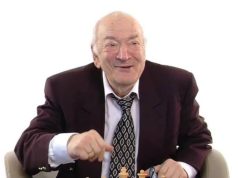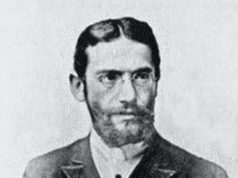In our series ‘Champion Born On This Date’, today I present you with a story on someone who dominated the Chess world for almost five decades and was the first Chess strategist in the history- François-André Danican Philidor of France.
Initial Days
Philidor was born on 7 September 1726. He started playing regularly around 1740 at the Café de la Régence, Paris. Legall de Kermeur, the best player in France in those days, taught Philidor initially. But by 1745, he became the strongest player in the world and continued to be so till his death.
At Café de la Régence, Paris, Philidor met and befriended a famous scientist and one of the Founding Fathers of America, Benjamin Franklin. Though an amateur at Chess for over four decades, Benjamin Franklin played a great role in propagation of Chess in USA.
‘Pawns are the Souls of Chess’
Philidor was a century ahead of others in Chess strategy and laid foundation of the modern Chess strategy. An important and popular opening is named after him wherein Black tries to form a strong Pawns barricade with to keep the enemy pieces away.
Philidor was as skilled as today’s top players in movements of Pawns and Rooks. His quote “Pawns are the soul of Chess” finds place in almost every Chess book. His book ‘Analyse du jeu des Échecs’ (Analysis of the game of Chess) was considered a standard Chess manual for at least a century.
The Endgame Studies
Philidor’s greatest contribution to Chess was by way of his Endgame Studies and their analyses. Unlike other Chess composers, Philidor chose to analyse basic and commonly occurring Endgames. Even today, over two centuries later, the Chess world is astonished at the accuracy of his Endgame work. Most of Philidor’s Endings are part of every Endgame book and in the syllabus of every Chess school.
France- Where he could not return
In December 1792, at the age of 65, Philidor was forced to leave France for England as his name was on the Revolutionary banishment list (declared by the Convention Nationale) during the French Revolution. Philidor was stuck in England thereafter, died on 31 August 1795 in London and was buried in St James, Piccadilly.
Today I have chosen an interesting game by Philidor wherein he has made use of all his Pawns effectively and has made as many as 22 Pawn moves!
Philidor – NN
France, 1790
1.e4 e5 2.f4 exf4 3.Bc4!? Qh4+ 4.Kf1 [This idea of Greco had become popular theory till the Morphy era.]
4…d6 5.Nf3 Bg4 6.d4 g5 7.Nc3 Qh5 8.h4! h6? 9.Kf2! Bxf3 10.gxf3! Philidor has succeeded in getting a safe and strong central Pawn mass.]
10…Qg6 11.hxg5 Qxg5 12.Ne2 Nd7 13.Nxf4 Qd8 14.c3
Strengthening ‘d4’ and also threatening Qb3.
14…Nb6 15.Bd3 Qd7 16.Be3 0–0–0
NN

Philidor
White pieces are well placed but the position is closed and nothing concrete could come from a piece attack here. Philidor, therefore, launches an attack with a Pawn roller against enemy King.
17.a4 Kb8 18.a5 Nc8 19.b4 c6 20.b5! cxb5 21.a6!
21.Qb3 a6 22.c4 is equally good.
21…b6 22.Qb3 Nf6 23.Bxb5 Qc7 24.d5!
Permanently weakening light squares in Black’s camp.
24…Bg7 25.Bc6 Nd7 26.Nd3 Ne5 27.Nxe5 Bxe5 28.f4!
Another Pawn joins the action.
28…Bg7 29.Bd4?
Allows a dangerous Pawn break.
29.Rag1! would have maintained the advantage.
29…Bxd4+?!
29…f5! would have led to a very complex balanced position.
30.cxd4 Qe7 31.Kf3!? Rdg8 32.Rac1 Rg6 33.Bb7!
Prevents Black’s penetration via ‘g’ file by exchanging a pair of Rooks.
33…Rhg8 34.Rxc8+ Rxc8 35.Bxc8 Kxc8 36.Rc1+ Kb8 37.Qc4 Qd7 38.f5!
Parrying Black’s threats with a tempo.
38…Rg8 39.Qc6! Qxc6 40.dxc6! Kc7 41.d5 h5 42.Rh1! Rh8 43.Rg1! Rh7
43…h4 loses to the following variation — 4.Rg7 h3 45.Rxf7+ Kb8 46.Rb7+ Ka8 47.c7 h2 48.Rb8+ Rxb8 49.cxb8Q+ Kxb8 50.Kg2 etc.
44.Rg8 b5 45.Ra8 Kb6 46.Rb8+ Kc7 47.Rb7+ Kd8 48.e5! [48.Rxa7]
48…dxe5 49.d6 Kc8 50.d7+ Kd8 51.Rb8+ Kc7 52.d8Q+ 1–0




